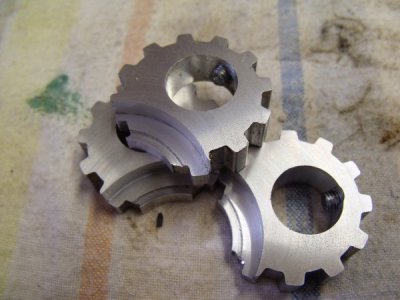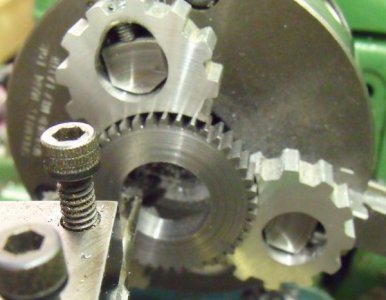- Joined
- Aug 7, 2018
- Messages
- 668
Hello Eric,
My error, I miss read. A four jaw has to be in really bad shape to be unusable.
In order to answer your question, yes soft jaws is one way, and I've on occasions just knocked up a set to do a particular job.
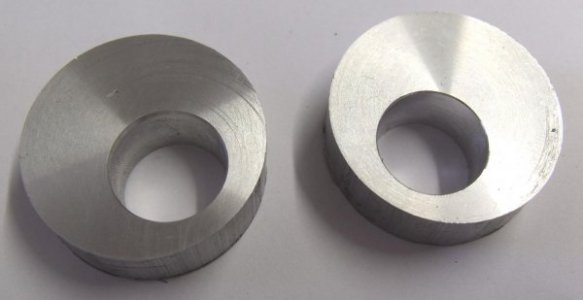
Some 40 mm alloy bar cut into slices and drilled to suit chuck jaw. In this case 16 mm, 5 mm from the edge.
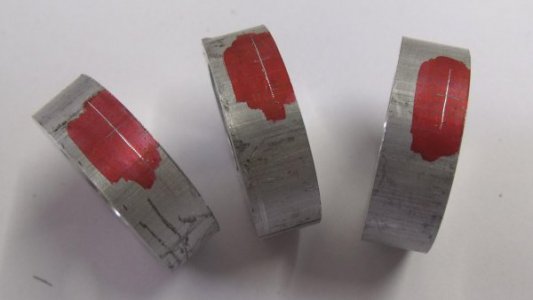
Marked on edge prior to drilling and threading for 2 Ba screws. The holes are centered on the chuck jaw.
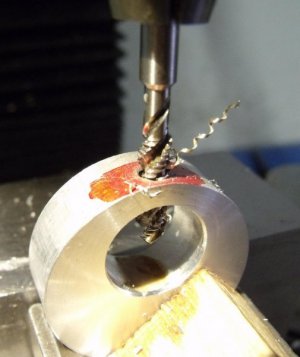
Threading 2 Ba under power at 50 rpm.
I did have a picture of these fitted to the chuck jaws but can't find them at the moment.
The other method I use is to make a collet. Again I use anything convenient, alloy, brass, and plastic.
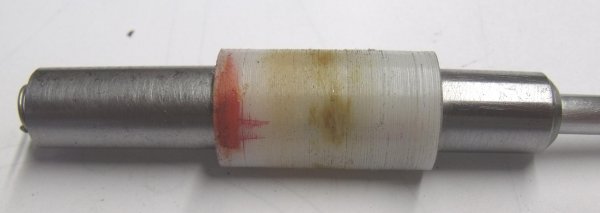
This is a collet that I made to drill and ream a 1/4" hole in a piece of 1/2" silver steel bar.
It is just a length of nylon rod the length of the chuck jaws, drilled 1/2" and the position of jaw 1 marked, and the steel bar pushed through it.
My error, I miss read. A four jaw has to be in really bad shape to be unusable.
In order to answer your question, yes soft jaws is one way, and I've on occasions just knocked up a set to do a particular job.

Some 40 mm alloy bar cut into slices and drilled to suit chuck jaw. In this case 16 mm, 5 mm from the edge.

Marked on edge prior to drilling and threading for 2 Ba screws. The holes are centered on the chuck jaw.

Threading 2 Ba under power at 50 rpm.
I did have a picture of these fitted to the chuck jaws but can't find them at the moment.
The other method I use is to make a collet. Again I use anything convenient, alloy, brass, and plastic.

This is a collet that I made to drill and ream a 1/4" hole in a piece of 1/2" silver steel bar.
It is just a length of nylon rod the length of the chuck jaws, drilled 1/2" and the position of jaw 1 marked, and the steel bar pushed through it.
Last edited:


